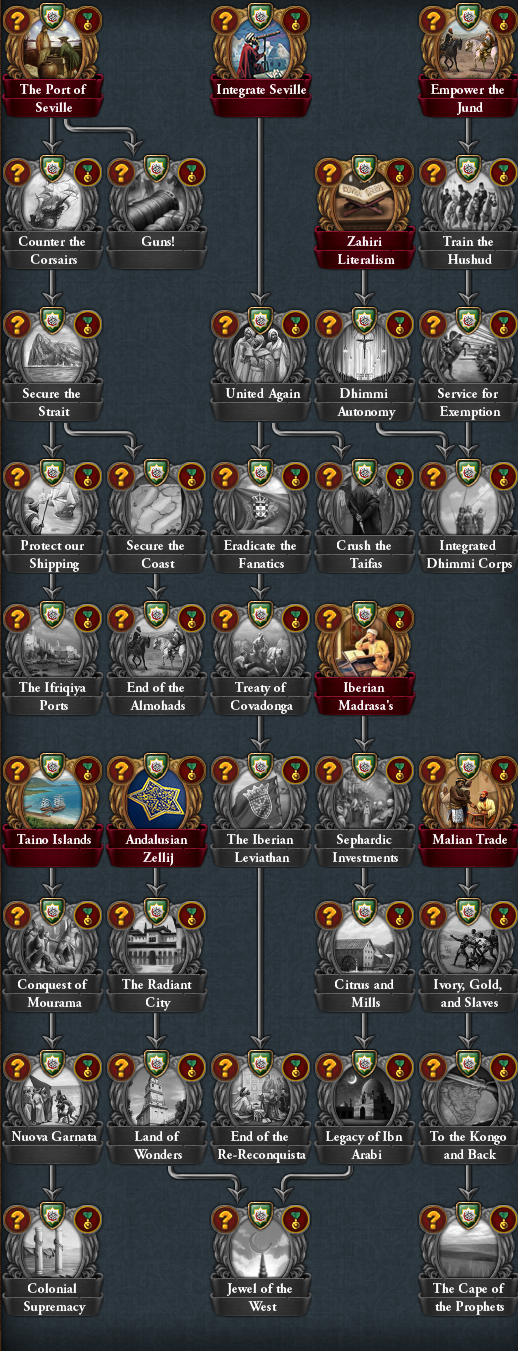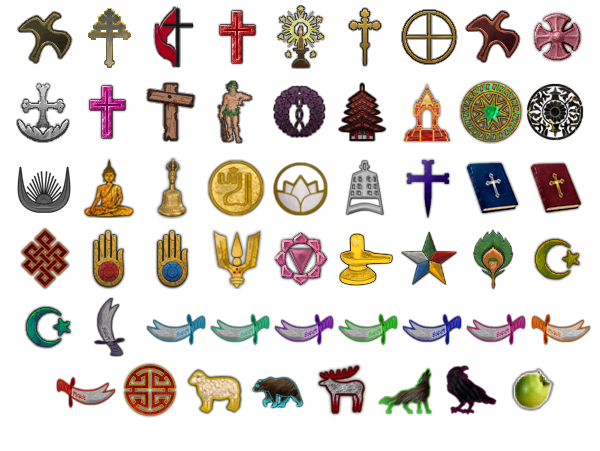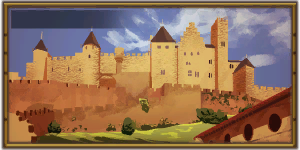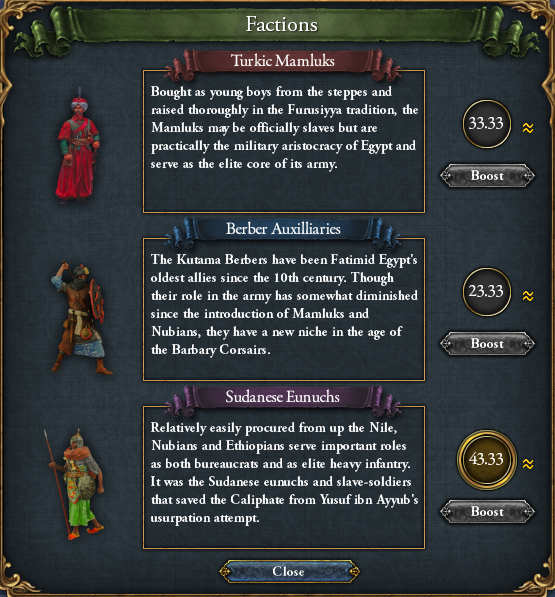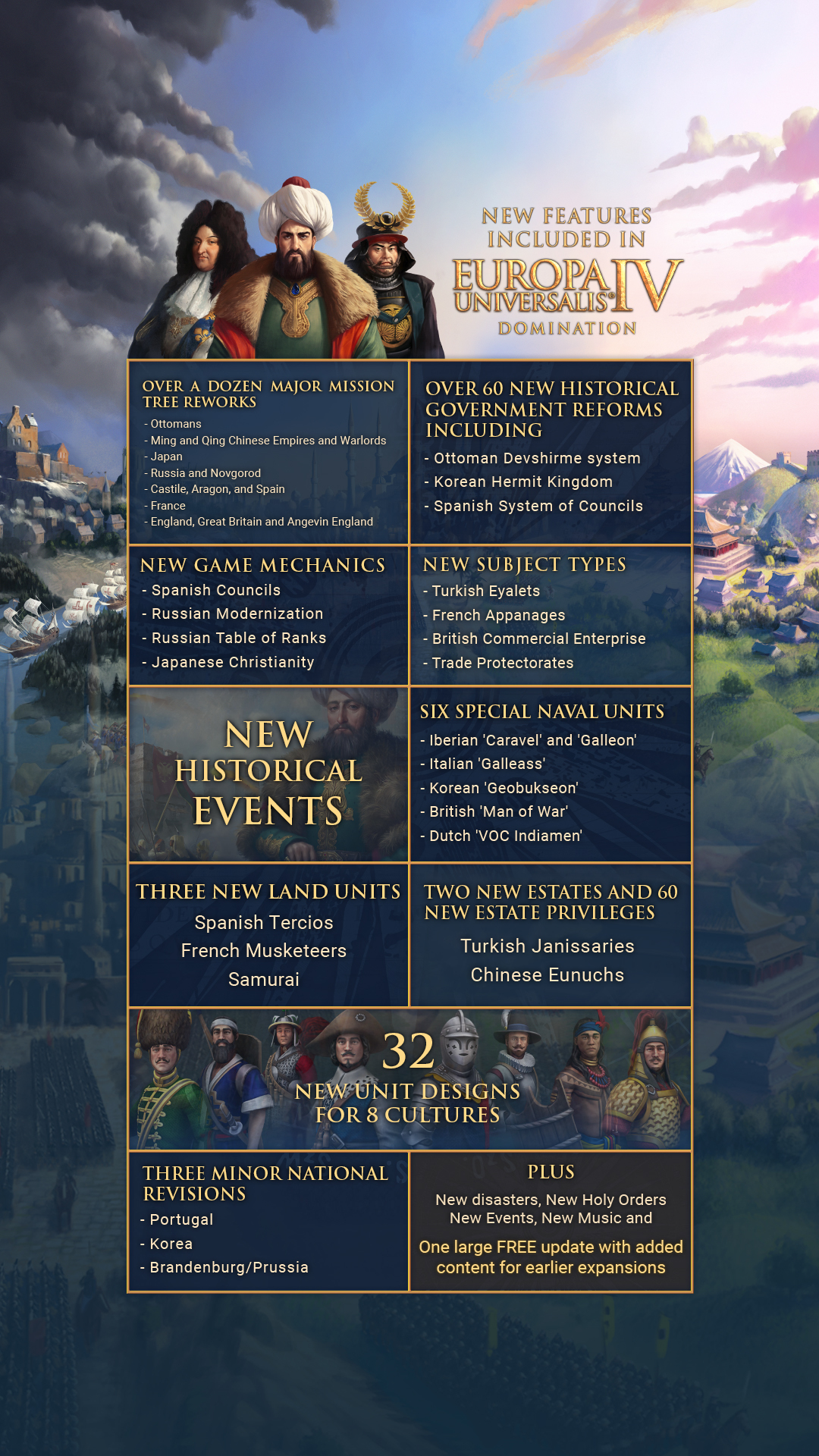
Europa Universalis IV - vasi
Hey everyone, welcome to another Developer Diary! Before we get to the content, we would like to let you know that we have gathered a lot of feedback regarding last week’s Diary from various sources, and are extremely happy that the new Central European content generated feedback and positivity! Despite that, there have been some concerns and requests, so before we move on, let’s take a look at what has changed since then, thanks to this feedback:
-------------------------------
Although the Ayyubids were of Kurdish origin, they were under ample Arabic influence, and most of their country was Arabic. In order to represent it, they have been given a new T1 'Ayyubid Dynasty' government reform, which negates the unaccepted culture modifier in all owned Levantine provinces. In other words, all Levantine cultures which are not accepted will be treated as accepted.


Note: As usual, all Art in the Developer Diary is placeholder.
Rounding off our setup changes is the new lore startup screen which explains the history of the dynasty from the Rise of Saladin until 1444 as well as the standard of Saladin, replacing the old flag. Lastly, Hisn Kayfa will gain access to the “Ayyubids“ cosmetic name which has been highly requested. It is unlocked through their new mission tree, and unlocking it will also empower your national ideas, akin to Great Armenia from King of Kings.

The mission tree was designed with flexibility in mind, allowing players to choose their path without being constrained to any specific outcome such as the formation of any tag. While there's ample content for those wishing to remain as the Ayyubids, players are also free to pursue other formables such as Egypt, Arabia, Timurids, Persia, or Mughals. The core focus of the mission tree revolves around restoring the Ayyubid Sultanate and vying for control of the Caliphate, offering claims stretching from Khorasan to Andalusia.
In regions historically not under Ayyubid control, the mission tree provides branching paths. Players can opt to conquer Persia and Anatolia for additional claims and temporary rewards, or alternatively, cultivate alliances in those regions and have allies complete missions on their behalf, unlocking enduring benefits. Approximately half of the missions are geared towards strategic development, including securing alliances, bolstering military strength, revitalizing Baghdad, controlling the Persian Gulf and the Red Sea, and even constructing the Suez Canal.



The Ayyubids after recovering their hegemony over the Middle East!
-------------------------------

Given their aforementioned close proximity, Hormuz and Oman inevitably find themselves in a struggle for dominance as they seek to expand into Arabia and unite the peninsula. Despite their mercantile focus on expanding power in India and Southeast Asia, both nations recognize the importance of controlling their immediate surrounding provinces. Consequently, the rewards for uniting Arabia, while significant, tend to be more generalized to accommodate the broader ambitions of these trade-oriented nations.

The trade aspect of their mission trees introduces a new Government Mechanic known as 'Arabian Mercantilism' for both nations. This mechanic empowers them to enhance their merchants and overseas outposts, enabling them to efficiently direct the lucrative trade of Asia into Arabia without extensive overseas conquest:

The lower section of the tree delves deeper into this unique mechanic, offering missions that can be completed without the need for extensive territorial conquest, aside from in India. Rather, players must focus on accumulating trade power in specific trade nodes. The rewards are particularly enticing; players can trigger the Spice Trade event independently of European involvement in the Indies, and even enact Thalassocracy much earlier and without the necessity of investing in idea groups.

As we showcased at the beginning of this section, the Omani and Hormuzi content hosts key differences when it comes to their mission trees. As such, divergent paths emerge for tackling their respective challenges. For instance, Hormuz will bolster provincial trade power in their fortified provinces, whereas Oman will incorporate a more pronounced religious aspect into certain missions. However, both nations will share access to a distinctive reward: the ability to establish the 'Arabian Traders' privilege, granting players the freedom to select bonuses tailored to their strategic preferences:

On the right side of the tree, a distinct branch unfolds for each nation. Hormuz, leveraging its ties within the Timurid Empire, will find a dedicated path focused on Persia, recognizing its significance as a pivotal trade node in the region:

For Oman, the branch will center around their renowned establishment of the Sultanate of Oman-Zanzibar. Players will embark on missions aimed at asserting dominance over the trade in the region, while also laying the foundation for their own formidable marine corps:


-------------------------------


While extensive cultural or provincial overhauls are not feasible, we have introduced the Cappadocian culture. This culture can be established in Anatolia through the new mission tree of Trebizond, as well as via the King of Kings mission tree of Byzantium. Furthermore, in order to increase the representation of the Greek population in Anatolia, we have turned the province of Samsun into a Greek Orthodox province with a Trapezuntine core, since the province was only conquered by the Ottomans some 20 years before the start date. Lastly, Greek dynamic province names now also apply to Pontic and Cappadocian cultures.


The mission tree's central objective is the restoration of Byzantium. Progressing along this path empowers the 'Komnenian Restoration' modifier, which evolves with each completed mission. The culmination of this effort is the conquest of Constantinople, which permanently enhances the modifier, offering benefits to core creation cost, army tradition, and prestige decay. Additionally, forming Byzantium through the new Trapezuntine mission tree grants significant amounts of monarch power.


The Caucasian branch of the mission tree focuses on asserting control over the region of the Caucasus, offering players the option to achieve this goal through military conquest or diplomatic means, where allies control the territory. Each method of completion yields different rewards. Additionally, players are tasked with securing their Caucasian borders by pacifying the hordes to the north. This branch also introduces the ability to integrate the Georgian culture into the Byzantine culture group:

Some more highlights around the mission tree revolve around:




-------------------------------

The mission tree centers on the expansion into neighboring lands. Players will have opportunities to subjugate the Tatars in the North and engage in conflicts with the Byzantines and Ottomans in the South, providing them with the option to proclaim themselves as the true emperors of the East. Additionally, they can utilize their connections in Russia to pursue diplomatic relations with the Muscovites, culminating in the 'Gothic Invasion'.
Starting missions will primarily focus on conflicts with Genoa. Historically, the Gavras dynasty of Theodoro experienced a gradual decline in influence, leading to their eventual annexation by the Ottomans. This will be represented through the introduction of a new privilege, the Italian Coastal Influence, which imposes penalties on sailors and trade power until resolved. Moreover, Genoa will gain 20 trade power in the Black Sea as long as this privilege remains active. These initial missions offer two paths for completion: either through conquest by expelling the Italians from Crimea or through diplomacy by fostering friendly relations with them.

Regarding their relations with the hordes, Theodoro takes a unique approach. Rather than focusing on the Gothic culture, which is only present in one province, they can opt to integrate with the Tatars. This strategy enables them to gain bonuses for their Cossacks and strengthen their steppe provinces economically.

Furthermore, as descendants of one of the Byzantine families that once served under the Komnenos, players will have the opportunity to press their claim and set sail south to conquer Constantinople. In doing so, they will earn various rewards aimed at demonstrating to the people of the Balkans and the Aegean the superiority of Gothic ways.

The image above highlights a distinctive tier 1 government reform, alongside a unique diplomatic action. However, in actuality, Theodoro has access to two tier 1 government reforms, the other being the 'Merchant Aristocracy'. Reflecting the quasi-republican nature of this merchant nation, this reform has been introduced, granting Theodoro the ability to establish trade posts and enhance their economic foundation from the outset.

The 'Recruit Foreign General' diplomatic action addresses Theodoro's historical reliance on hiring foreigners to lead their armies due to their minuscule population. While the use of mercenaries is represented through buffs in their ideas, the diplomatic action fills the gap for hiring foreign officers. With this action, players can pay an ally one year of their income, and in exchange, the ally will appoint a general for Theodoro's army. The general's stats will be influenced by the ally's army tradition and their opinion of Theodoro.
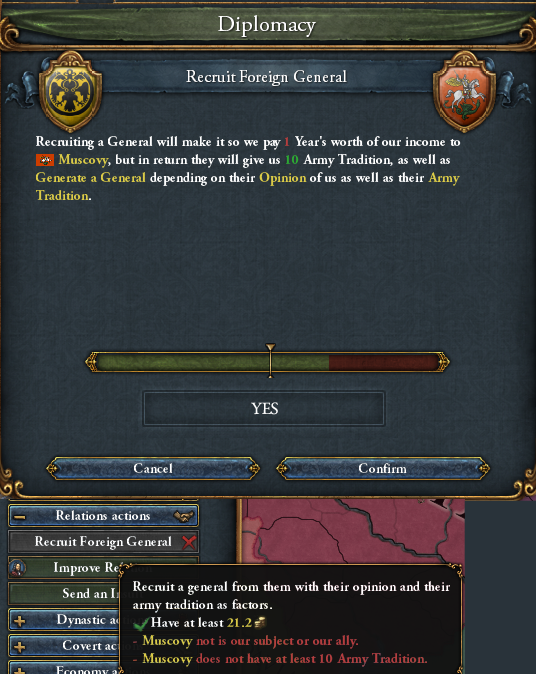
Given the Gavras family's ties to Russia, a small branching mission path is available, providing players with options for their Russian diplomacy. They can opt for a peaceful approach, forming alliances that culminate in the ability to recruit Streltsy. Alternatively, they can pursue a more aggressive strategy by pressing their claim to the Russian throne, leading to substantial expansion of their realm.

Finally, upon completing all tasks, players gain access to the 'Gothic Invasion' mission. After humiliating the Holy Roman Emperor and solidifying their position as an empire, they unlock a unique casus belli. The 'Gothic Invasion' casus belli functions similarly to the Imperialism one, with the distinction that it is limited to European provinces only.

Thank you for tuning into another Developer Diary, as always your feedback and comments are incredibly vital and appreciated as we fine-tune the content! Next week Markus will discuss and showcase new content around the Hordes of Asia!
And of course, today's diary wouldn't be complete without a Father Lorris comic:

- Hungary is now a (re)formable nation for tags with Hungarian or Transylvanian primary cultures.
- Hungarian conquest missions no longer require Hungary to be an independent nation, which should make them a much more attractive subject.
- The 'Serbian Despotate' Tier 1 government reform now grants access to the Order of the Dragon.
- We have added the 'Bohemian Commonwealth' optional cosmetic country rename as a reward of the namesake mission.
- The decision to form Romania was updated to account for the map changes introduced in Emperor. It now correctly requires the province of Tolcu instead of Silistria.
- The Aztec ‘Blood’ mechanic is now named ‘Tonalli’.
- The 'Tēlpochcalli' Academy Local Organization now gives a +5 Governing Cost Increase instead of -1 Building Slots in the entire area.
- The Personal Union Casus Belli on Poland for Austria requires them to have less than 400 development instead of less than 300, making it less harsh on the player.
- The 'Universal Empire' incident can now be acquired by a Spanish Emperor as well, and it should have harsher penalties.
- To address the concerns regarding the weakness of the Hussite HRE path and the princes converting to Protestantism, we have tweaked the event which will now make them less likely to convert if the player manages to convert a sizeable portion of the HRE to Hussite.
-------------------------------
Hisn Kayfa
One of the most requested countries, this last bastion of the Ayyubids is slated to receive a plethora of flavorful content. From missions to events, government reforms, and more, let’s take a deep dive at what’s in store!Although the Ayyubids were of Kurdish origin, they were under ample Arabic influence, and most of their country was Arabic. In order to represent it, they have been given a new T1 'Ayyubid Dynasty' government reform, which negates the unaccepted culture modifier in all owned Levantine provinces. In other words, all Levantine cultures which are not accepted will be treated as accepted.


Note: As usual, all Art in the Developer Diary is placeholder.
Rounding off our setup changes is the new lore startup screen which explains the history of the dynasty from the Rise of Saladin until 1444 as well as the standard of Saladin, replacing the old flag. Lastly, Hisn Kayfa will gain access to the “Ayyubids“ cosmetic name which has been highly requested. It is unlocked through their new mission tree, and unlocking it will also empower your national ideas, akin to Great Armenia from King of Kings.

The mission tree was designed with flexibility in mind, allowing players to choose their path without being constrained to any specific outcome such as the formation of any tag. While there's ample content for those wishing to remain as the Ayyubids, players are also free to pursue other formables such as Egypt, Arabia, Timurids, Persia, or Mughals. The core focus of the mission tree revolves around restoring the Ayyubid Sultanate and vying for control of the Caliphate, offering claims stretching from Khorasan to Andalusia.
In regions historically not under Ayyubid control, the mission tree provides branching paths. Players can opt to conquer Persia and Anatolia for additional claims and temporary rewards, or alternatively, cultivate alliances in those regions and have allies complete missions on their behalf, unlocking enduring benefits. Approximately half of the missions are geared towards strategic development, including securing alliances, bolstering military strength, revitalizing Baghdad, controlling the Persian Gulf and the Red Sea, and even constructing the Suez Canal.



The Ayyubids after recovering their hegemony over the Middle East!
-------------------------------
Hormuz & Oman
Hormuz & Oman, despite their geographical proximity in the Arabian Peninsula, showcase distinct playstyles shaped by their religious beliefs and cultural traditions. Hormuzi merchants wield influence across India, Persia, and Arabia, leveraging their trade prowess, while Oman is renowned for its shipbuilding expertise and stands as one of the two starting Ibadi nations in the game. In a manner reminiscent of the dynamics between Qara Qoyunlu and Aq Qoyunlu from King of Kings, both nations share a common end goal in their mission trees, yet their approaches feature subtle distinctions tailored to their unique attributes and strengths. Let’s take a closer look!
Given their aforementioned close proximity, Hormuz and Oman inevitably find themselves in a struggle for dominance as they seek to expand into Arabia and unite the peninsula. Despite their mercantile focus on expanding power in India and Southeast Asia, both nations recognize the importance of controlling their immediate surrounding provinces. Consequently, the rewards for uniting Arabia, while significant, tend to be more generalized to accommodate the broader ambitions of these trade-oriented nations.

The trade aspect of their mission trees introduces a new Government Mechanic known as 'Arabian Mercantilism' for both nations. This mechanic empowers them to enhance their merchants and overseas outposts, enabling them to efficiently direct the lucrative trade of Asia into Arabia without extensive overseas conquest:

The lower section of the tree delves deeper into this unique mechanic, offering missions that can be completed without the need for extensive territorial conquest, aside from in India. Rather, players must focus on accumulating trade power in specific trade nodes. The rewards are particularly enticing; players can trigger the Spice Trade event independently of European involvement in the Indies, and even enact Thalassocracy much earlier and without the necessity of investing in idea groups.

As we showcased at the beginning of this section, the Omani and Hormuzi content hosts key differences when it comes to their mission trees. As such, divergent paths emerge for tackling their respective challenges. For instance, Hormuz will bolster provincial trade power in their fortified provinces, whereas Oman will incorporate a more pronounced religious aspect into certain missions. However, both nations will share access to a distinctive reward: the ability to establish the 'Arabian Traders' privilege, granting players the freedom to select bonuses tailored to their strategic preferences:

On the right side of the tree, a distinct branch unfolds for each nation. Hormuz, leveraging its ties within the Timurid Empire, will find a dedicated path focused on Persia, recognizing its significance as a pivotal trade node in the region:

For Oman, the branch will center around their renowned establishment of the Sultanate of Oman-Zanzibar. Players will embark on missions aimed at asserting dominance over the trade in the region, while also laying the foundation for their own formidable marine corps:


-------------------------------
Trebizond
Historically, the rulers of Trebizond established a tradition of marrying into Muslim families, such as the Turkomen Aq & Qara Qoyunlus. This was a pragmatic solution to gain alliances to protect the declining Komnenid realm. Trebizond has received a new 'Empire of Trebizond' Tier 1 government reform as a part of the free update, which includes a new modifier that increases the heathen countries‘ opinion of Trebizond, and the owners of the DLC will also receive access to the new 'Heathen Royal Marriage' which will allow Trebizond to create royal marriages with heathens despite being Christian.

While extensive cultural or provincial overhauls are not feasible, we have introduced the Cappadocian culture. This culture can be established in Anatolia through the new mission tree of Trebizond, as well as via the King of Kings mission tree of Byzantium. Furthermore, in order to increase the representation of the Greek population in Anatolia, we have turned the province of Samsun into a Greek Orthodox province with a Trapezuntine core, since the province was only conquered by the Ottomans some 20 years before the start date. Lastly, Greek dynamic province names now also apply to Pontic and Cappadocian cultures.


The mission tree's central objective is the restoration of Byzantium. Progressing along this path empowers the 'Komnenian Restoration' modifier, which evolves with each completed mission. The culmination of this effort is the conquest of Constantinople, which permanently enhances the modifier, offering benefits to core creation cost, army tradition, and prestige decay. Additionally, forming Byzantium through the new Trapezuntine mission tree grants significant amounts of monarch power.


The Caucasian branch of the mission tree focuses on asserting control over the region of the Caucasus, offering players the option to achieve this goal through military conquest or diplomatic means, where allies control the territory. Each method of completion yields different rewards. Additionally, players are tasked with securing their Caucasian borders by pacifying the hordes to the north. This branch also introduces the ability to integrate the Georgian culture into the Byzantine culture group:

Some more highlights around the mission tree revolve around:
- Hellenization of Anatolia. Trebizond will be able to convert the Anatolian region to Hellenic cultures – Greek, Pontic, and Cappadocian through events.
- Referencing the historically close ties between the Komnenian dynasty and the Crusader states of the Levant, a small mission branch has been added. This branch involves liberating Cilicia, resulting in the local culture shifting to Armenian and excluding Armenian provinces from Hellenization events. The culmination of this branch is the liberation of the Holy Land, unlocking a Tier 2 ¡Crusader Nobility' reform with beneficial modifiers and allowing players to release Jerusalem as a vassal regardless of age and religion.
- Another branch of the mission tree focuses on Genoa and the recovery of Perateia, the Trapezuntine Black Sea colonies. Initially burdened with an estate privilege symbolizing Latin dominance over the Black Sea trade routes, Trebizond must either forge an alliance with Genoa or expel them from the region to rid itself of this constraint. Similarly, the mission tree presents various options for dealing with Theodoro, offering the chance to vassalize them through an event or to seize the province by force, unlocking a permanent local modifier.




-------------------------------
Theodoro
The Principality of Theodoro is one of the hardest starts in this DLC, having to combat the Hordes, the Ottomans as well as the Italians, they will have to use clever diplomacy and some newfound tools if they are to survive.
The mission tree centers on the expansion into neighboring lands. Players will have opportunities to subjugate the Tatars in the North and engage in conflicts with the Byzantines and Ottomans in the South, providing them with the option to proclaim themselves as the true emperors of the East. Additionally, they can utilize their connections in Russia to pursue diplomatic relations with the Muscovites, culminating in the 'Gothic Invasion'.
Starting missions will primarily focus on conflicts with Genoa. Historically, the Gavras dynasty of Theodoro experienced a gradual decline in influence, leading to their eventual annexation by the Ottomans. This will be represented through the introduction of a new privilege, the Italian Coastal Influence, which imposes penalties on sailors and trade power until resolved. Moreover, Genoa will gain 20 trade power in the Black Sea as long as this privilege remains active. These initial missions offer two paths for completion: either through conquest by expelling the Italians from Crimea or through diplomacy by fostering friendly relations with them.

Regarding their relations with the hordes, Theodoro takes a unique approach. Rather than focusing on the Gothic culture, which is only present in one province, they can opt to integrate with the Tatars. This strategy enables them to gain bonuses for their Cossacks and strengthen their steppe provinces economically.

Furthermore, as descendants of one of the Byzantine families that once served under the Komnenos, players will have the opportunity to press their claim and set sail south to conquer Constantinople. In doing so, they will earn various rewards aimed at demonstrating to the people of the Balkans and the Aegean the superiority of Gothic ways.

The image above highlights a distinctive tier 1 government reform, alongside a unique diplomatic action. However, in actuality, Theodoro has access to two tier 1 government reforms, the other being the 'Merchant Aristocracy'. Reflecting the quasi-republican nature of this merchant nation, this reform has been introduced, granting Theodoro the ability to establish trade posts and enhance their economic foundation from the outset.

The 'Recruit Foreign General' diplomatic action addresses Theodoro's historical reliance on hiring foreigners to lead their armies due to their minuscule population. While the use of mercenaries is represented through buffs in their ideas, the diplomatic action fills the gap for hiring foreign officers. With this action, players can pay an ally one year of their income, and in exchange, the ally will appoint a general for Theodoro's army. The general's stats will be influenced by the ally's army tradition and their opinion of Theodoro.

Given the Gavras family's ties to Russia, a small branching mission path is available, providing players with options for their Russian diplomacy. They can opt for a peaceful approach, forming alliances that culminate in the ability to recruit Streltsy. Alternatively, they can pursue a more aggressive strategy by pressing their claim to the Russian throne, leading to substantial expansion of their realm.

Finally, upon completing all tasks, players gain access to the 'Gothic Invasion' mission. After humiliating the Holy Roman Emperor and solidifying their position as an empire, they unlock a unique casus belli. The 'Gothic Invasion' casus belli functions similarly to the Imperialism one, with the distinction that it is limited to European provinces only.

Thank you for tuning into another Developer Diary, as always your feedback and comments are incredibly vital and appreciated as we fine-tune the content! Next week Markus will discuss and showcase new content around the Hordes of Asia!
And of course, today's diary wouldn't be complete without a Father Lorris comic:







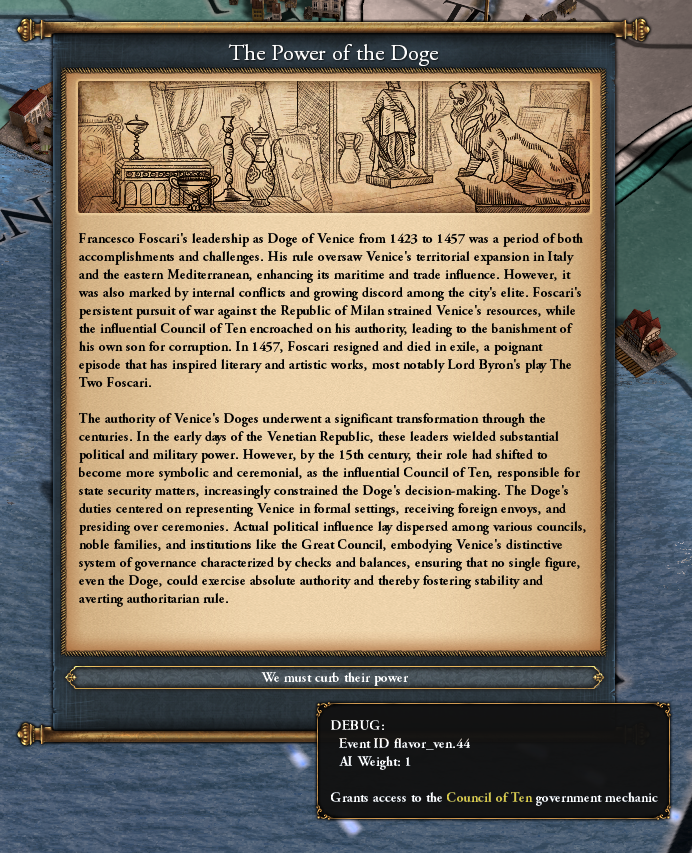













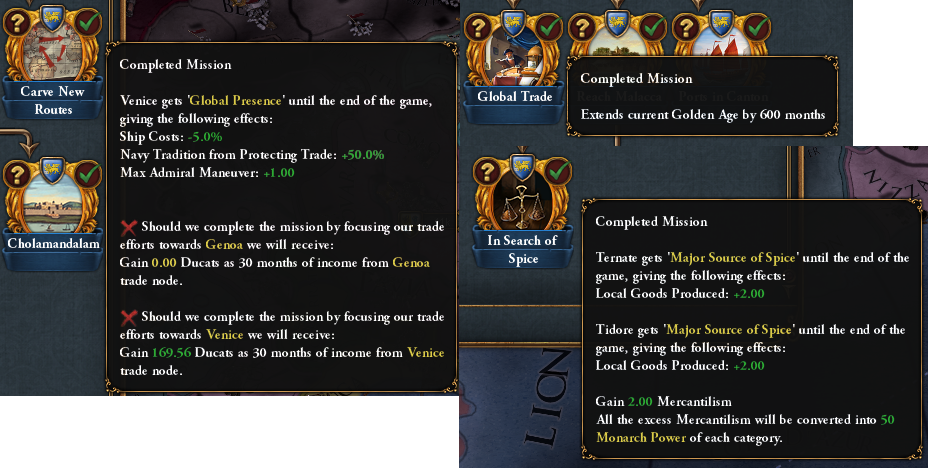




























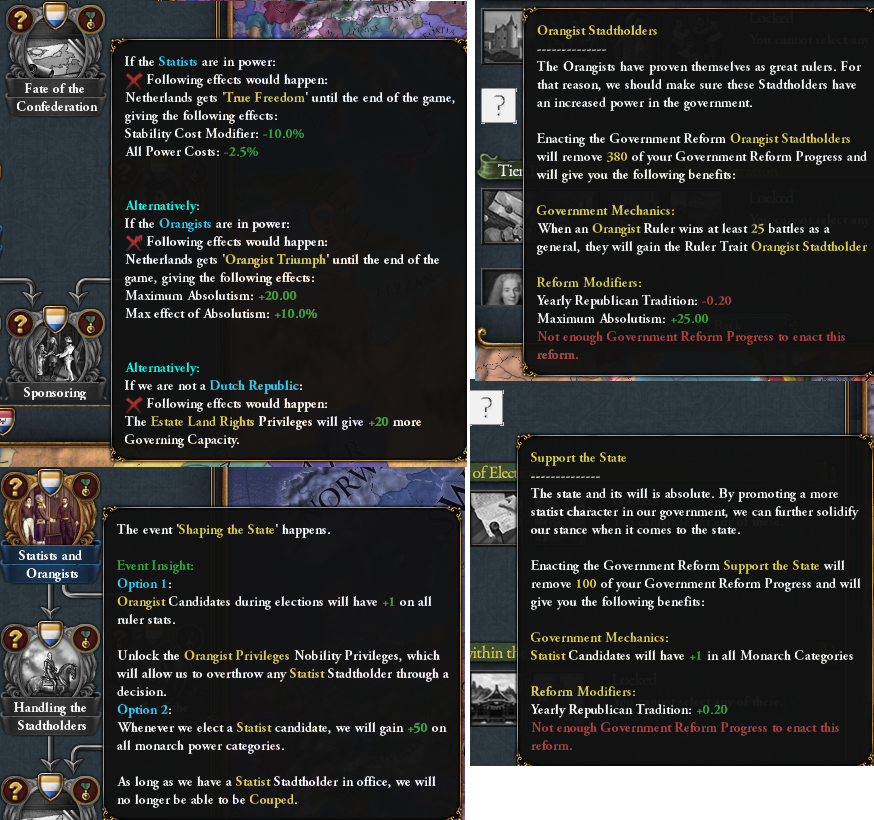









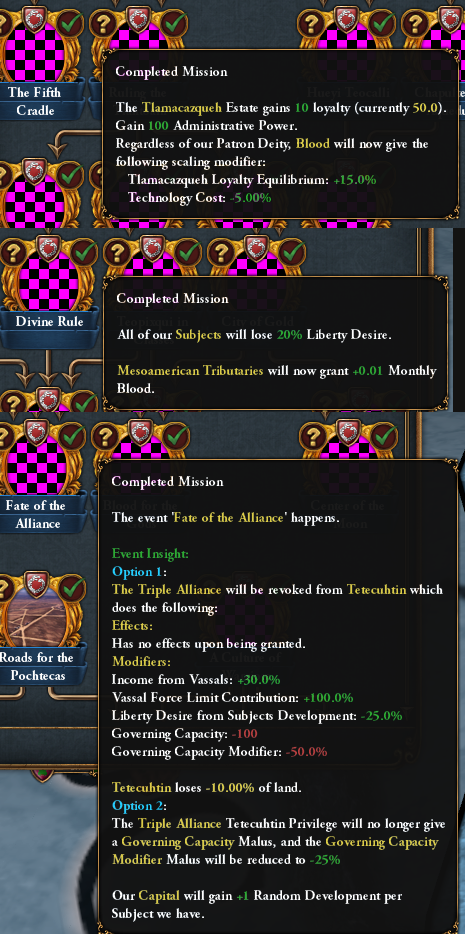
























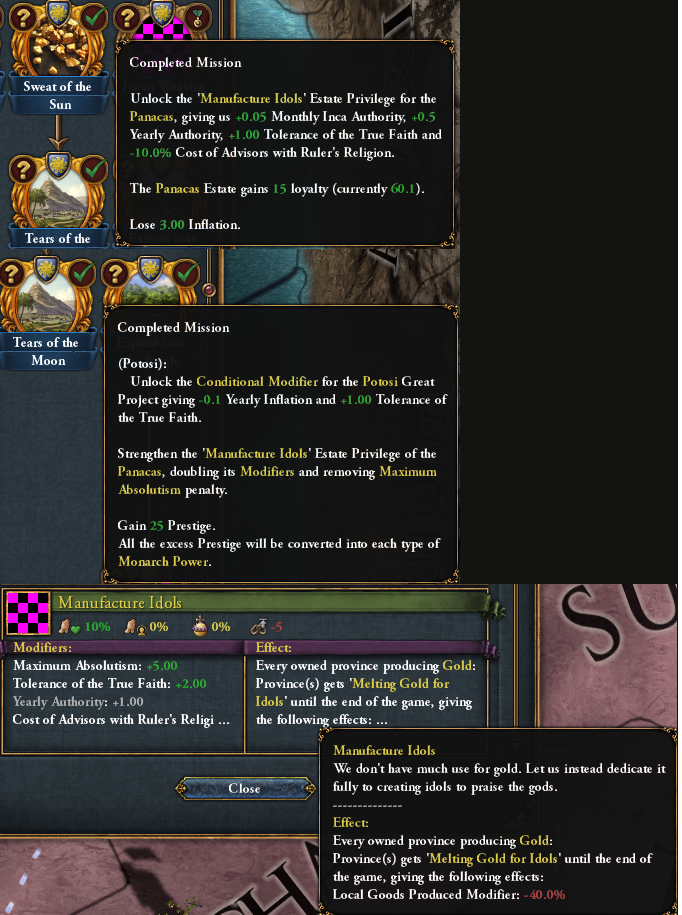






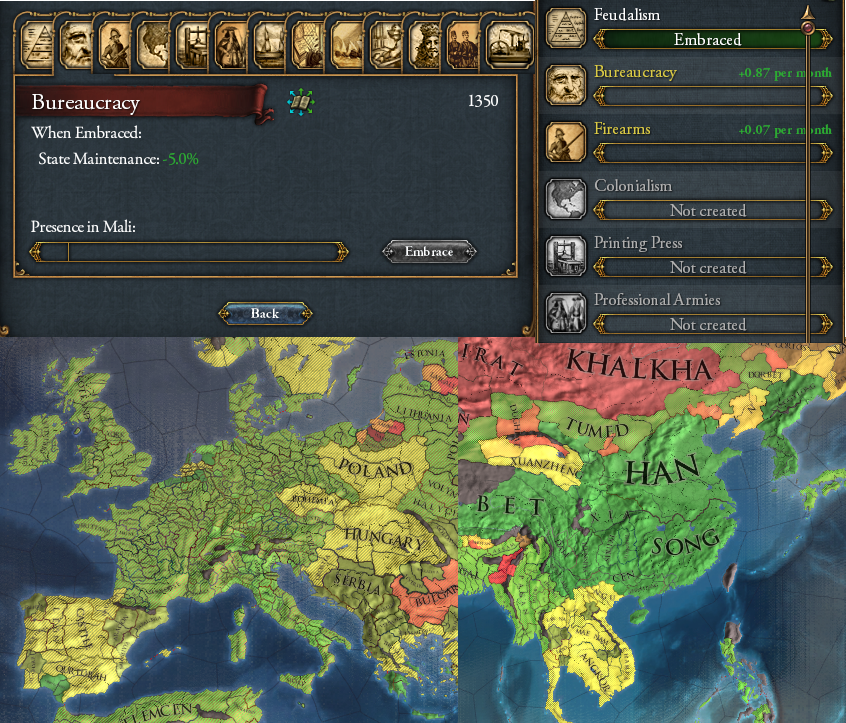
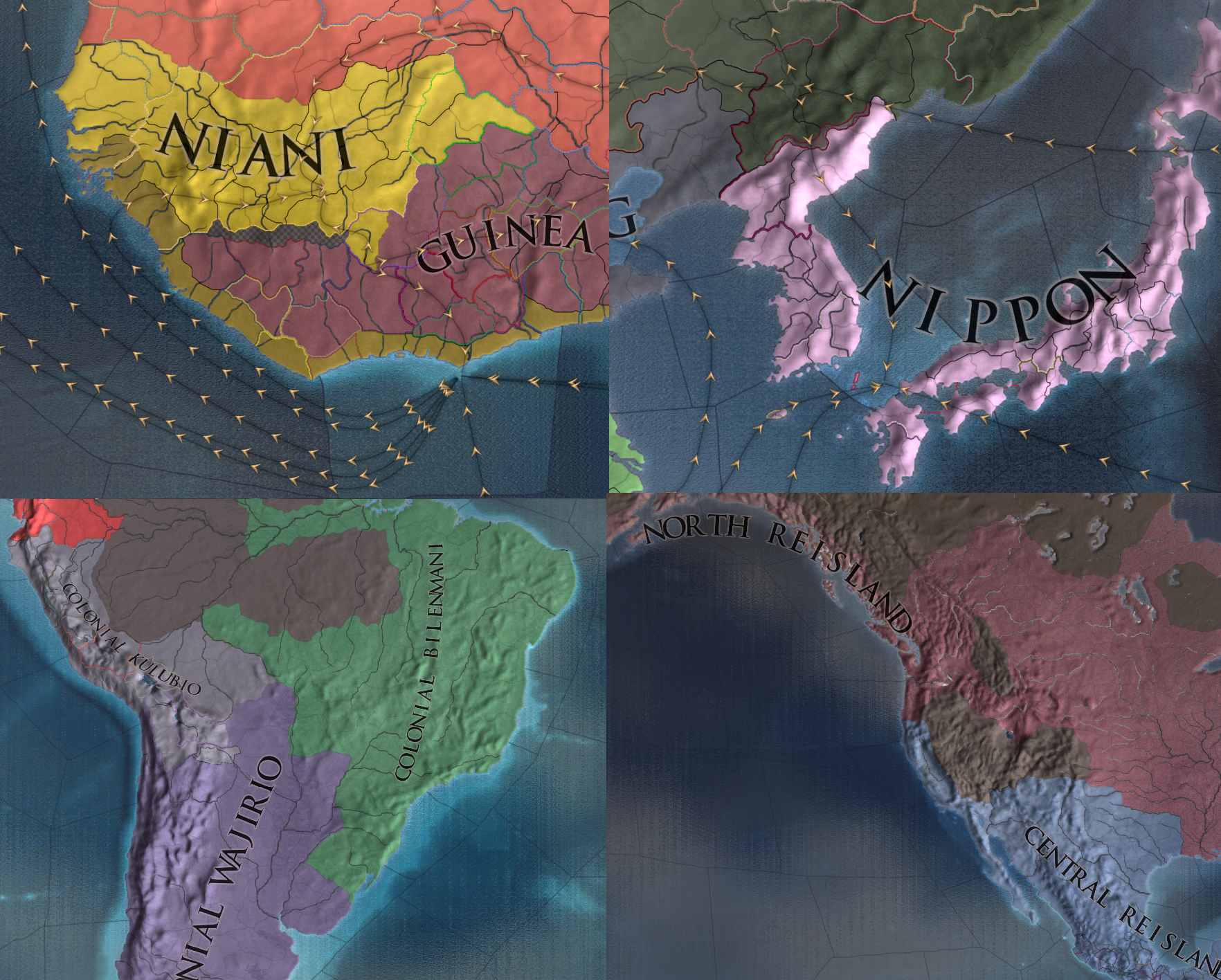
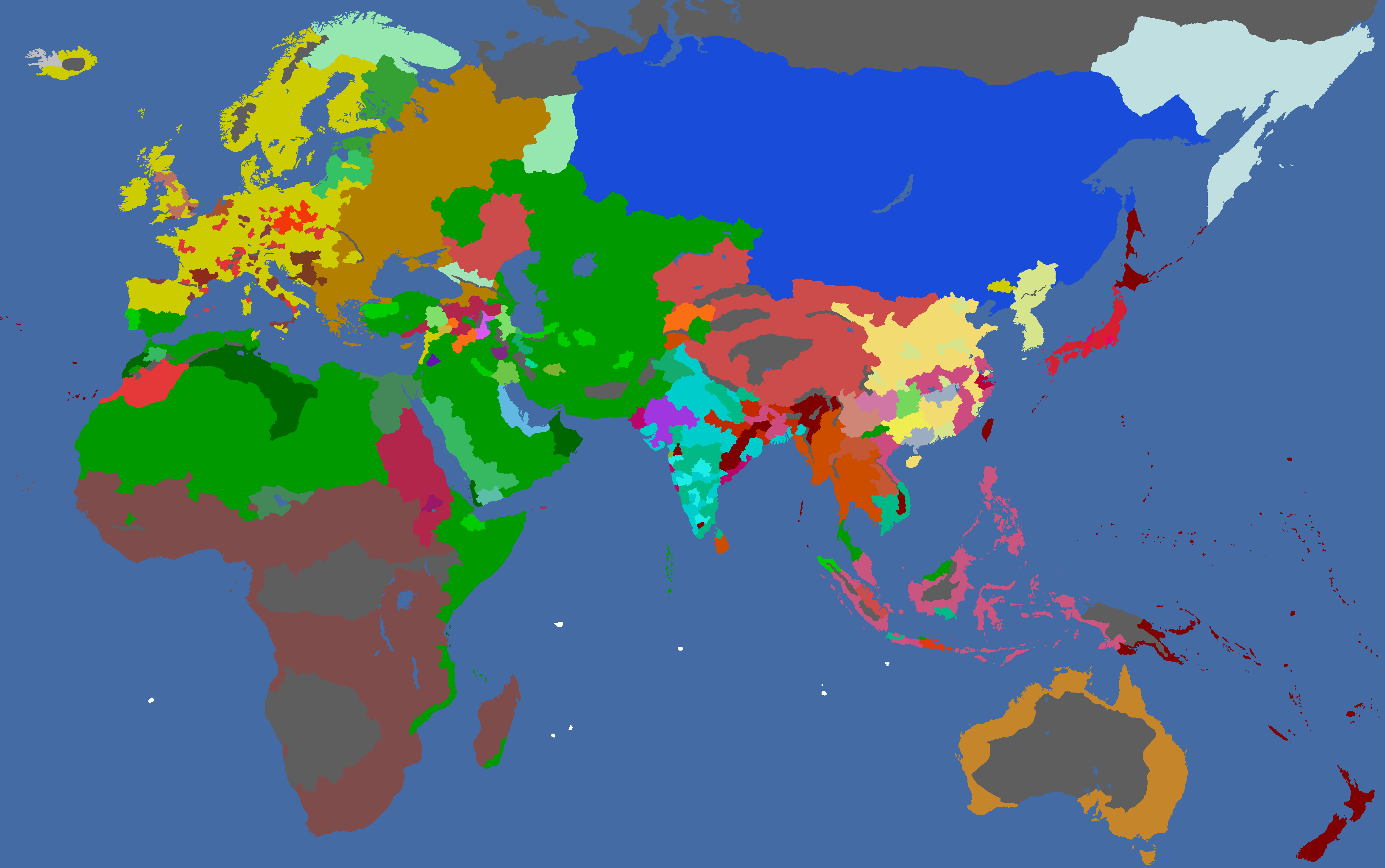

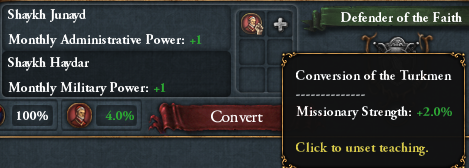

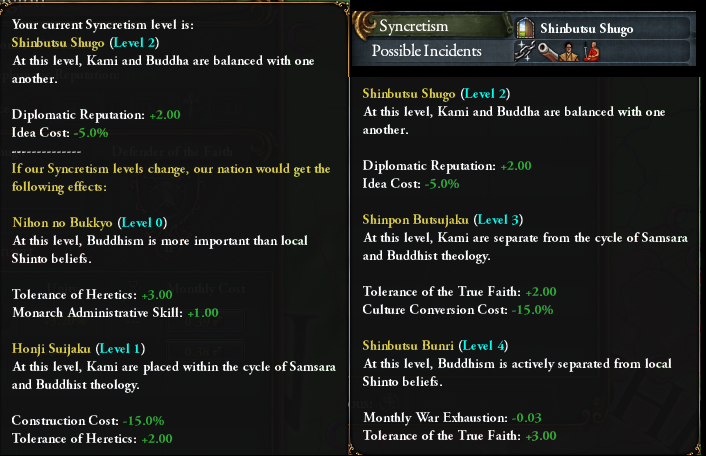


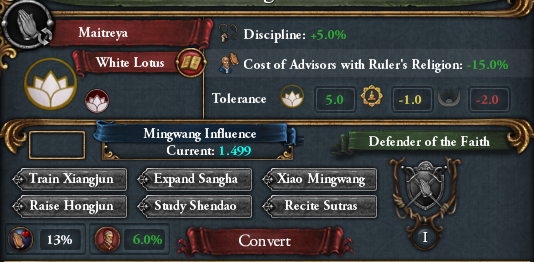

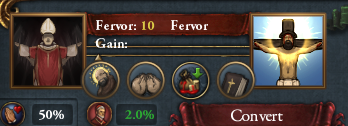

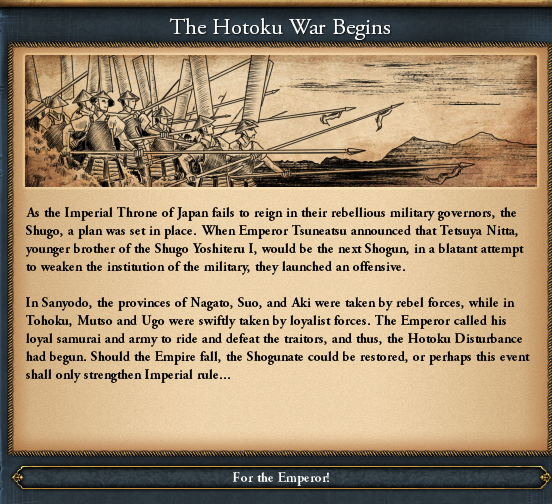
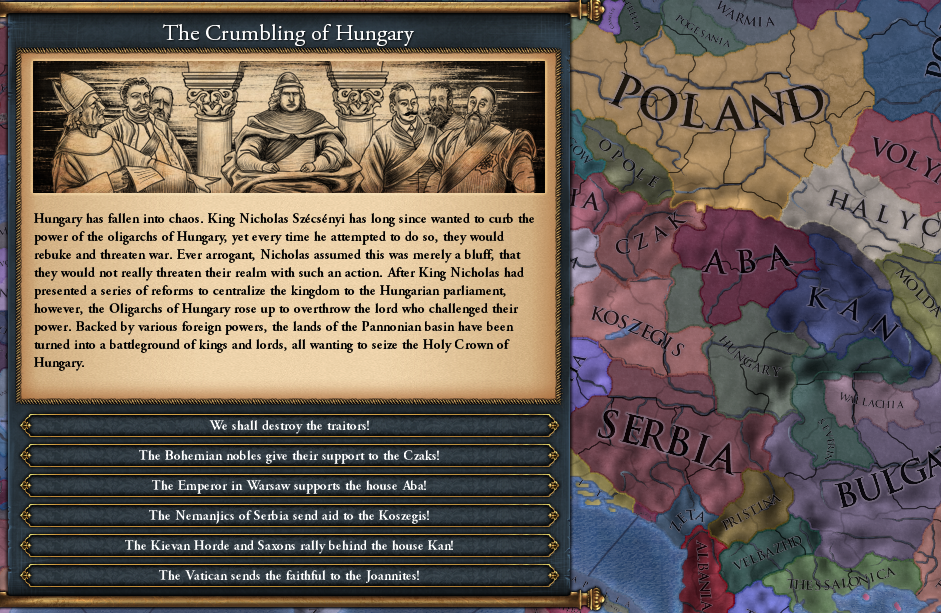





 [/expand]
[/expand] [/expand]
[/expand] [/expand]
[/expand] [/expand]
[/expand] [/expand]
[/expand]


